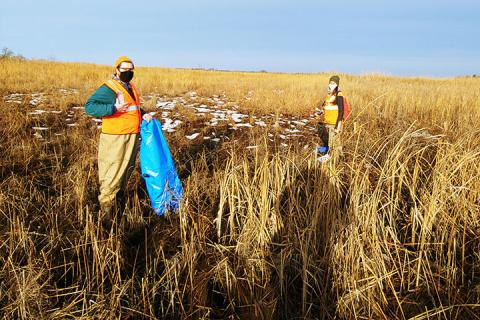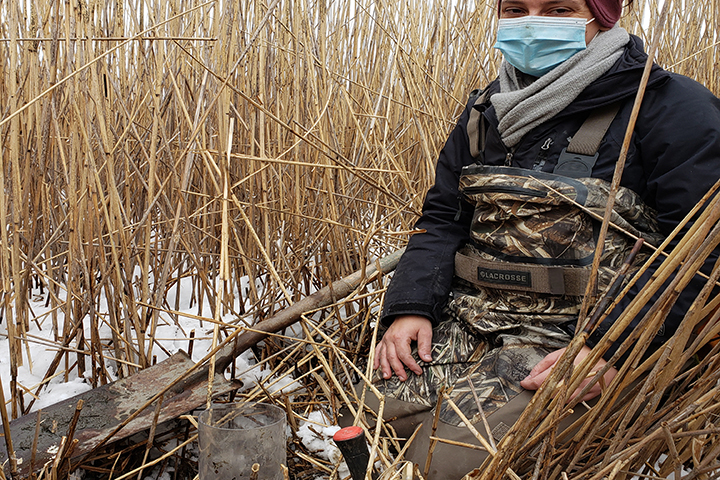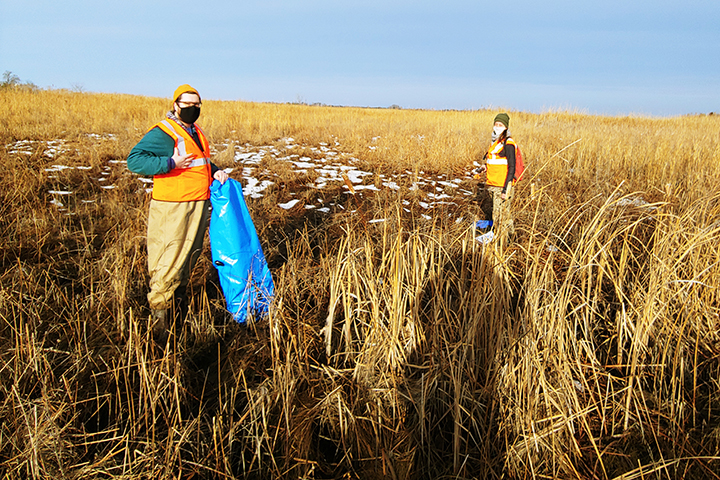
This project team is investigating whether the application of biochar to salt marshes (added by prescribed burns or manually) improves water quality and stores enough carbon in marsh soils to offset Phragmites removal, looking across biochar amended marshes, unburned marshes, and marshes dominated by Phragmites.
Removing the invasive common reed, Phragmites australis, has been a decades-long management goal along the U.S. East Coast as managers seek to restore native high marsh habitat and ecosystem functions and services. Phragmites removal and restoration efforts have proven beneficial for habitat and biodiversity. However, its removal has potentially negative impacts on water quality and carbon storage, as Phragmites stores nitrogen and accumulates organic carbon more effectively than native marsh vegetation. Tidal wetland managers are left with uncertainties about these potential tradeoffs of Phragmites removal and implications for achieving marsh restoration goals. One approach that could potentially ease impacts of Phragmites removal is prescribed burns, a common method for vegetation removal that produces burned biomass (“biochar”), which in turn increases soil nitrogen removal and carbon storage.
Through collecting and analyzing salt marsh sediment cores at three different study sites, the team will provide a quantitative understanding of how biochar inputs alter salt marsh processes and the resulting ecosystem services. The team will collaborate with coastal managers from Delaware NERR, Delaware Natural Resources and Environmental Control, U.S. Fish and Wildlife Service, Center for the Inland Bays, Partnership for the Delaware Estuary, and Delaware Wild Lands to develop outputs, including a site-based, immersive workshop, a document for best practices for prescribed burns, and a series of publications and presentations.

